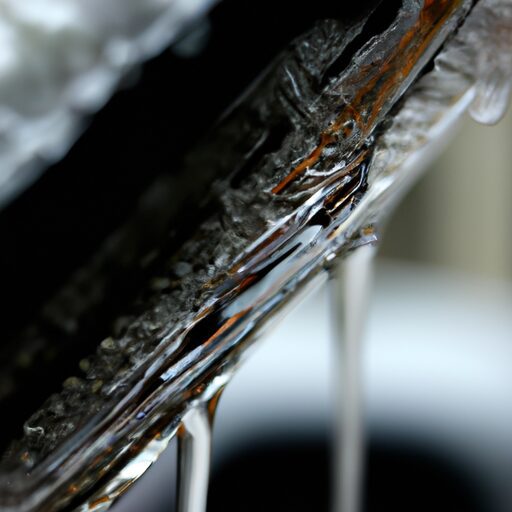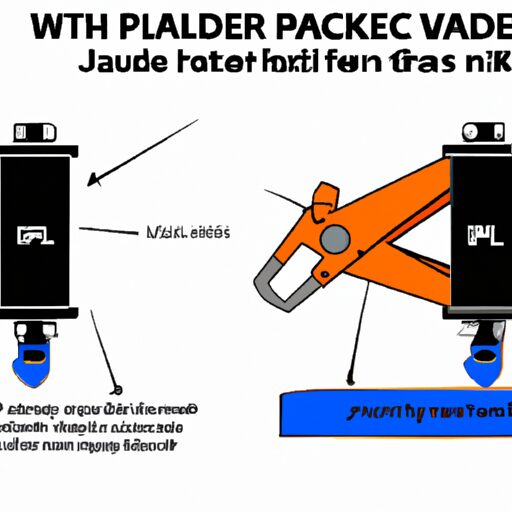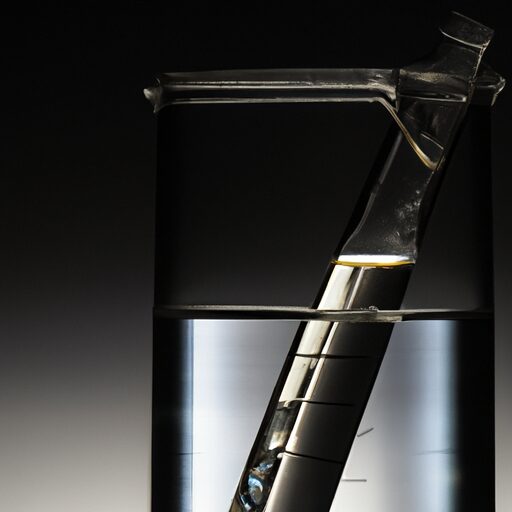Freezing Temp Of Hydraulic Fluid
In the realm of hydraulic systems, understanding the freezing temperature of hydraulic fluid is crucial for maintaining optimal performance. The freezing point of hydraulic fluid refers to the temperature at which it solidifies, potentially causing detrimental effects on system functionality. This article aims to explore the factors that influence the freezing point of hydraulic fluids, as well as common freezing temperatures encountered. Moreover, it will delve into the repercussions that arise from frozen fluid in hydraulic systems and provide insights on how to prevent such occurrences. Additionally, this article will outline signs indicating frozen hydraulic fluid and safe methods for thawing it. Lastly, maintenance tips will be provided to ensure proper fluid performance in cold environments.
By adopting an academic style characterized by objectivity and impersonality, this article seeks to provide a technical and detailed examination of the topic while ensuring clarity for an audience eager to gain comprehensive understanding.
Understanding the Importance of Freezing Temperature in Hydraulic Systems
The freezing temperature of hydraulic fluid is a critical factor in maintaining the optimal performance and longevity of hydraulic systems. Temperature control plays an important role in ensuring the smooth operation of these systems, as extreme cold temperatures can have a significant impact on their reliability. When hydraulic fluid freezes, it can lead to a loss of fluidity and viscosity, making it difficult for the system to function properly. This can result in reduced efficiency, increased wear and tear on components, and even system failure.
The importance of temperature control lies in its ability to prevent freezing and maintain the fluid’s desired properties. By keeping the hydraulic fluid at its recommended operating temperature range, the risk of freezing is minimized, ensuring that the system operates efficiently and reliably. Temperature control also helps to prevent any potential damage caused by expansion or contraction due to extreme temperatures.
Understanding the impact of freezing on system reliability is crucial for designing and implementing effective temperature control measures. By considering factors such as ambient temperature, heat transfer capabilities, insulation methods, and appropriate fluid selection, engineers can ensure that hydraulic systems are well-equipped to handle varying environmental conditions.
Factors affecting the freezing point of hydraulic fluid will be discussed in detail in the subsequent section.
Factors Affecting the Freezing Point of Hydraulic Fluid
Factors such as the composition and impurities of the solution can influence the solidification point of the substance used in hydraulic systems, akin to how external influences shape the course of a river. The freezing point of hydraulic fluid is an important consideration as low temperatures can have a significant impact on the performance and reliability of hydraulic systems.
Table: Factors Affecting Freezing Point of Hydraulic Fluid
| Factor | Description |
|---|---|
| Composition | Different fluids have different chemical compositions, which can affect their freezing points. Some fluids may contain additives that lower their freezing temperature. |
| Impurities | Impurities present in the fluid can also impact its freezing point. Contaminants such as water or dirt particles can act as nucleation sites, causing the fluid to freeze at higher temperatures. |
| Pressure | High pressure conditions can increase the freezing point of hydraulic fluid, while low pressure conditions may decrease it. |
| Lubricating properties | Certain additives in hydraulic fluids help improve lubrication at low temperatures, preventing damage to system components during startup or operation in cold environments. |
Understanding these factors is crucial for selecting a hydraulic fluid with an appropriate freezing point for specific operating conditions. It ensures that the fluid remains in a liquid state even under extremely cold temperatures and maintains optimal system performance.
Transitioning into the subsequent section about common freezing temperatures of hydraulic fluids…
Common Freezing Temperatures of Hydraulic Fluids
One important consideration when selecting hydraulic fluid is understanding the range of temperatures at which it remains in its liquid state. The freezing point of hydraulic fluids can vary depending on their composition and additives. It is crucial to choose the right hydraulic fluid that can withstand the lowest expected temperature to prevent freeze damage.
Common freezing temperatures of hydraulic fluids range from -54°C (-65°F) to -40°C (-40°F). However, some specialized hydraulic fluids have lower freezing points, reaching as low as -73°C (-100°F). These low-temperature hydraulic fluids are typically used in extreme cold environments or for applications where there is a risk of exposure to extremely low temperatures.
Choosing the appropriate hydraulic fluid with a suitable freezing temperature is essential to ensure optimal performance and prevent freeze damage. When exposed to freezing temperatures, hydraulic fluids can thicken or solidify, leading to reduced flow and potential damage to components. This can result in decreased system efficiency, increased wear on equipment, and even complete system failure.
Understanding the common freezing temperatures of different hydraulic fluids allows engineers and operators to select the most appropriate fluid for their specific application needs. In the subsequent section about ‘effects of freezing on hydraulic system performance’, we will explore how these frozen conditions impact overall system functionality.
Effects of Freezing on Hydraulic System Performance
Understanding the impact of freezing on a hydraulic system’s performance is crucial to ensure its optimal functionality and prevent potential damage. In cold weather conditions, several components of a hydraulic system are susceptible to negative effects that can impair their operation. One common issue is the thickening of hydraulic fluid due to low temperatures, which can result in increased viscosity and reduced flow rates. This can lead to sluggish system response and decreased overall efficiency. Additionally, freezing temperatures can cause seals and O-rings to become brittle, resulting in leaks and potential failure of these vital components.
Another effect of cold weather on hydraulic systems is the increased risk of cavitation. When hydraulic fluid becomes too cold, it can form vapor bubbles that collapse under high pressure, leading to damage in pump impellers or other critical components. Furthermore, water contamination is more likely in cold weather conditions due to condensation forming inside the system. Water can corrode metal parts and degrade the performance of hydraulic fluids.
To troubleshoot common issues in cold weather conditions, it is essential to warm up the hydraulic system gradually before applying heavy loads or operating at maximum pressure. Implementing insulation measures around critical components such as valves and motors can also help maintain proper temperature levels.
Understanding the effects of freezing on a hydraulic system’s performance enables operators to identify potential problems early on and take appropriate preventive measures. By preventing freezing in hydraulic systems through insulation techniques or utilizing cold-weather-specific fluids, operators can ensure reliable operation even in extreme weather conditions without compromising system integrity or efficiency.
Preventing Freezing in Hydraulic Systems
Insulating the hydraulic system is an effective method to prevent freezing. By adding insulation materials, such as foam or fiberglass, around the pipes and components of the system, heat transfer to the environment is minimized. Another approach is using heaters or warmers that provide a controlled amount of heat to maintain the fluid temperature above freezing point. These devices are typically equipped with temperature sensors and can be adjusted accordingly to ensure optimal performance. Additionally, anti-freeze agents can be added to the hydraulic fluid to lower its freezing point and prevent solidification in cold temperatures. These agents are specifically designed for hydraulic systems and should be carefully selected based on compatibility with other fluids and components within the system.
Insulating the System
To enhance the thermal stability of the hydraulic system, a suitable insulating material can be employed to minimize heat transfer and maintain the temperature of the fluid as stable as a tightly woven fabric. Insulation techniques play a crucial role in preventing freezing in hydraulic systems by minimizing heat loss and maintaining optimal operating temperatures. The choice of insulation material is important, as it should have low thermal conductivity to reduce heat transfer from the environment to the fluid. Commonly used insulating materials include foam, fiberglass, or mineral wool blankets that provide effective thermal resistance. These materials create a barrier between the hydraulic system and the surroundings, limiting heat exchange and maintaining stable temperatures. By using appropriate insulation techniques, it is possible to prevent freezing and ensure smooth operation of hydraulic systems. Transitioning into the subsequent section about "using heaters or warmers," additional measures can be taken to actively control temperature levels within the system.
Using Heaters or Warmers
Heaters or warmers are commonly used in hydraulic systems to actively control the temperature and prevent any fluctuations. These heating methods are essential for ensuring smooth operation of the system, especially in cold environments where the hydraulic fluid may freeze. The use of heaters or warmers allows for precise temperature control, maintaining the fluid within the desired operating range.
To give you a better understanding of how heaters or warmers work, let’s take a look at this table that compares different heating methods:
| Heating Method | Advantages | Disadvantages |
|---|---|---|
| Electric heaters | Easy installation and control | High energy consumption |
| Immersion heaters | Efficient heat transfer | Limited access for maintenance |
| Heat exchangers | Energy efficiency | Requires additional equipment |
By employing these heating methods, hydraulic systems can effectively regulate their temperature and prevent freezing. In the next section, we will explore another approach to combating freezing temperatures by adding anti-freeze agents into the system.
Adding Anti-freeze Agents
Adding anti-freeze agents to the hydraulic system is an effective approach for maintaining optimal temperature control and preventing potential disruptions caused by cold environments. By increasing the antifreeze concentration in the fluid, the freezing point can be lowered, ensuring that the hydraulic system remains functional even in extremely low temperatures. There are various types of anti-freeze agents available, including ethylene glycol and propylene glycol, which possess excellent thermal properties and compatibility with hydraulic fluids.
In addition to adding anti-freeze agents, there are alternative freezing prevention methods that can be employed. Insulating the hydraulic lines or components with materials such as foam or heat tape can help retain heat and minimize the risk of freezing. Additionally, utilizing heaters or warmers specifically designed for hydraulic systems can provide a reliable means of maintaining a consistent temperature.
Transitioning into the subsequent section about signs of frozen hydraulic fluid and how to thaw it safely without specifying ‘step’, it is crucial to identify these indicators promptly to prevent further damage to the system.
Signs of Frozen Hydraulic Fluid and How to Thaw it Safely
When assessing the condition of hydraulic fluid, it is crucial to be aware of the signs indicating that it has frozen and to employ safe thawing methods. Freezing of hydraulic fluid can occur when exposed to extremely low temperatures, leading to potential hazards such as reduced system performance and possible damage to components. Identifying the signs of frozen hydraulic fluid is essential in preventing further complications.
One common sign of frozen hydraulic fluid is a decrease or complete loss in system pressure. This occurs due to the formation of ice crystals within the fluid, obstructing its flow through the system. Another indicator is an unresponsive or sluggish operation of hydraulic equipment, as the thickened fluid struggles to provide adequate lubrication and power transmission.
To safely thaw frozen hydraulic fluid, several techniques can be employed. The most effective method involves gradually raising the temperature surrounding the affected system using external heat sources like electric heaters or warm air blowers. It is important not to use open flames as they pose a fire hazard.
In conclusion, understanding the signs of frozen hydraulic fluid and employing appropriate thawing techniques are vital for maintaining optimal system performance and preventing potential hazards. Transitioning into maintenance tips for ensuring proper fluid performance in cold environments, it is essential to implement preventive measures that minimize exposure to freezing temperatures and utilize suitable anti-freeze agents.
Maintenance Tips for Ensuring Proper Fluid Performance in Cold Environments
To ensure optimal performance in cold environments, implementing proper maintenance measures is crucial. One of the key aspects of maintaining hydraulic fluid performance in cold temperatures is monitoring and adjusting its viscosity. Fluid viscosity refers to its resistance to flow, and it plays a vital role in determining how well the fluid can function under low temperature conditions.
There are several maintenance techniques that can be used to ensure proper fluid viscosity in cold environments. First, regular oil analysis should be conducted to monitor the condition of the fluid and identify any potential issues. This analysis can help determine if the fluid needs to be changed or if additives need to be added to improve its performance in cold temperatures.
Secondly, it is important to store hydraulic equipment and fluids in a controlled environment where temperature fluctuations are minimal. Exposure to extreme cold temperatures can cause the fluid’s viscosity to change, affecting its overall performance.
Lastly, using synthetic hydraulic fluids with a lower pour point can also help maintain proper fluid viscosity in cold environments. These types of fluids have been specifically designed for use in extreme temperature conditions and offer improved low-temperature performance compared to conventional mineral-based fluids.
By implementing these maintenance techniques and closely monitoring fluid viscosity, operators can ensure that their hydraulic systems perform optimally even in extremely cold conditions.
Frequently Asked Questions
Can hydraulic systems operate in extremely low temperatures?
Hydraulic systems can operate in extremely low temperatures, but their performance may be affected. Extreme cold can cause the hydraulic fluid to thicken, resulting in increased viscosity and reduced flow rate, which can impair system efficiency and responsiveness.
What are the risks associated with using hydraulic fluids with a low freezing point?
A risk assessment should be conducted when using hydraulic fluids with a low freezing point. Alternative fluids may need to be considered to prevent operational failures and damage to equipment in extremely low temperatures.
Are there any additives available to lower the freezing point of hydraulic fluids?
Additives can be used to lower the freezing point of hydraulic fluids. These additives are specifically designed to alter the fluid’s properties, preventing it from solidifying at low temperatures and ensuring optimal performance in cold environments.
How can freezing temperatures affect the viscosity of hydraulic fluids?
Viscosity changes in hydraulic fluids can be significant in cold weather, affecting their overall performance. In extreme temperatures, the fluid’s viscosity increases, leading to reduced flow rates and increased friction. This can impair the system’s efficiency and potentially cause component failure.
What are the potential consequences of a hydraulic system freezing and how can they be resolved?
The impact of freezing on a hydraulic system can lead to decreased efficiency, component damage, and system failure. Methods to prevent hydraulic fluid freezing include using low temperature fluids, insulating components, and employing heating systems.
Conclusion
The freezing temperature of hydraulic fluid is a critical factor in the performance of hydraulic systems. Understanding the factors that influence the freezing point and common temperatures at which fluids freeze is essential for maintaining optimal system operation. Freezing can have detrimental effects on system performance, causing components to seize and potentially leading to costly repairs. Preventive measures, such as using appropriate fluid formulations and implementing insulation techniques, are crucial in avoiding freezing issues. Regular maintenance and monitoring are also vital for ensuring proper fluid performance in cold environments.







